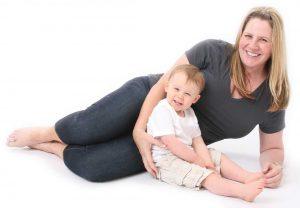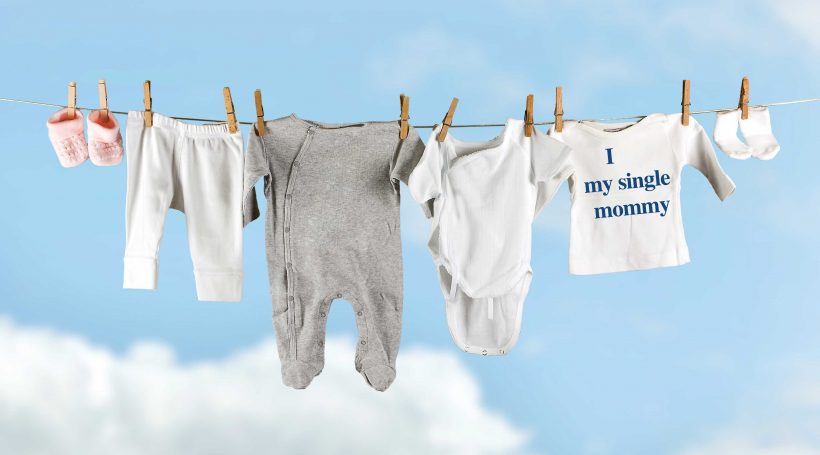Just as college and career fell into place for her, Cherry Hill resident Marni Schatz expected that a partner and a family would follow in time. But as the years passed with no serious Mr. Right in the picture, she started thinking seriously about a Plan B.
“Having a family was something I always thought I would do,” says Schatz, who works in real estate development. “But when I was 41, I realized if I was going to have a baby, I had to do it now.”
Never one to second-guess her gut, Schatz set about researching her options. As she plunged ahead, it helped having a few 40-something friends also considering having children on their own. Within 15 months of starting fertility treatments, she was overjoyed to learn she was pregnant with her son Sam, now a healthy, active 18-month-old who is learning new words by the day.
And while there certainly have been moments of sheer exhaustion over the last year-and-a-half, as well as wishful thinking that someone else would share diaper duty or do a load of laundry, Sam has brought a sense of peace and fulfillment to Shatz’s life that grows with every milestone he hits.
“I have the ideal situation,” she says, noting both financial stability and the large number of doting relatives and friends eager to babysit at every chance. “I don’t feel like I’m missing anything.”
Schatz’s family of two is part of a cultural shift in American life. A half-century ago, the offspring of unmarried mothers accounted for about 5 percent of births in the United States. Nowadays, nearly half (48 percent) of all first births are outside of marriage, according to data compiled by the Harris poll and the National Marriage Project. While single mothers by choice are but a small percentage of the population of un-hitched mothers – an estimated 50,000 single American women over the age of 35 give birth each year on their own – their growing number feeds into concern about the weakening state of marriage.
While many children raised by single parents thrive, marriage remains the gold standard of family life in the United States. Children are more likely to thrive economically, socially and psychologically in an intact family where the biological parents are married, says Brad Wilcox, director of the National Marriage Project, a nonpartisan initiative that provides research and analysis of the health of marriage in America. While many of the advantages are tied to financial resources, not all of them are, he says.
“This is part and parcel of the growing disconnect between marriage and parenthood in the United States,” says Wilcox. “Many Americans feel they can do one without the other.”
And indeed they can. Changes in social mores and women’s increasing economic power, as well as advances in technology, have all played a part in the growing number of women choosing motherhood outside of marriage. Naturally, popular culture has reflected the changes, beginning with the ’90s television sitcom “Murphy Brown.” In that show, a 40-something divorced news anchor played by Candice Bergen chooses to have a baby on her own, igniting cultural shock and discussion. On the big screen, A-list actresses like Jennifer Lopez and Jennifer Aniston have played women who get pregnant by artificial insemination. And the feature film “Baby Mama” told the story with a modern twist: Tina Fey starred as a single, successful businesswoman who hired a working-class surrogate (Amy Poehler) to carry her baby.
But for single “choice moms” in real life, Hollywood doesn’t typically enter into the decision-making. They tend to be college-educated and earning a good income. They often own a home prior to starting a family, according to choicemoms.org and statistics compiled by Mikki Morrissette, author of “Choosing Single Motherhood,” a seminal 2005 book often consulted by women considering their options.
Statistics from choicemoms.org also offer insight into the lives of these mothers. When asked, “If you could hit the re-set button, what would you do differently?” a majority of respondents reported they had “no regrets about how life is working out.” Still, data revealed many wished they hadn’t contemplated motherhood as long as they had and started trying sooner. Even more indicated they wished they had ended a relationship sooner and not wasted their fertility. A handful had regrets, agreeing with the statement that they might have been able to make it work with a particular someone and, in hindsight, they wished they’d started a family then.
The estimate that 50,000 women a year start families on their own comes from choicemoms.org. Among women who identify as choice moms, the vast majority either used sperm donors and fertility treatments to conceive, or they adopted their children. A telling fact: California Cryobank, one of the largest sperm banks in the country, currently does up to 30 percent of its business with single women, compared to none when it opened in 1977, says spokesman Scott Brown. He projects their single women clientele will continue to grow as foreign countries catch up socially with the United States.
“For many of us, this is not initially how we thought we would enter parenthood,” says Naomi Marmorstein, a professor of psychology at Rutgers University in Camden, and a choice mother of a toddler. Given her profession, Marmorstein thoroughly reviewed the body of research available on the development and well-being of children raised in single-mother homes.
“I was interested in looking into a variety of outcomes and what factors account for any problems they have,” says Marmorstein, whose areas of study include mental health problems in children, adolescents and young adults.
While she did conclude that children of single mothers in the United States lag behind children from stable, two-parent households on certain measures, poverty seemed to account for a large portion of the disadvantage. In addition, children of single mothers, on average, hear fewer words from infancy into the preschool period and, therefore, sometimes enter school disadvantaged in terms of language development.
“I thought that was something, through some conscious effort, I could control by making sure my child hears a lot of language,” says Marmorstein, who adopted her son Jonah at birth.
Many of the risk factors seem to hinge on family stability or lack of it, she notes. Frequent changes in caregiving environment and family instability can lead to emotional, social and educational issues.
“The important thing about choice moms is that they enter motherhood as a conscious choice,” Marmorstein says. “Their children may be less likely to be exposed to changes in caregiving environments and chaotic living situations.”
And while there may not be a second parent in the picture, single women who choose motherhood often create their own support environments. Marmorstein, for example, is involved in a group called Single Mothers by Choice (SMC), which is a virtual network with local support communities, including one in the Philadelphia area. The group typically meets monthly in members’ homes. While many attendees have children and form friendships through the group, meetings also attract women who are considering having children and have questions or “just want to meet people who have done it to see if they’re sane,” Marmorstein says.
Some critics who have studied children from single-mother households cite the “sense of loss and frustration” felt by children conceived by artificial insemination. With no opportunity to meet the anonymous donor who contributed half of his or her biological identity, these children may spend their life feeling a sense of something missing. Morrissette points out that this issue not only applies to the offspring of choice mothers but to all children born of donor sperm or egg.

Cherry Hill’s Marni Schatz with her son, Sam
Schatz, who conceived Sam through in vitro fertilization, chose to have an open sperm donor, as opposed to an anonymous one, so that if and when Sam has questions about his donor, he will have the opportunity to learn more when he turns 18.
Schatz has no immediate plans to get back to dating, but hopes she will start again at some point. Caring for her toddler is her preoccupation at the moment, she says, and that keeps her family life full. The only grandchild in the family, Sam is doted on by Schatz’s parents, as well as a gaggle of “aunties” – friends willing to babysit or play with him so mom can have a break. Schatz’s job is somewhat flexible, offering time to take Sam to swim lessons and other kiddie activities. He also attends preschool and has a nanny on days when Schatz works. Thanks to the many layers of care, she can still get out with friends and manages to balance work and baby as well as can be expected.
“At times I need a break and I just want him to sit down and play with toys, but we’re good. He sleeps at night, he eats well and he’s funny. He’s amazing,” says Schatz. “I didn’t know what I expected, but it’s cooler than I thought.”












